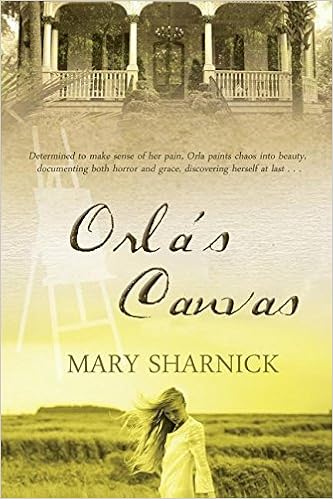Hello, commies and lovers of great fiction!
Today I am pleased to share a review of a novel by a much esteemed fellow author Mary Donnarumma Sharnick. I have read her two previous novels set in the Venetian lagoon. This time around the author sets her novel in "misspelled town" of St. Suplice, Louisiana. I admit that I do not read a lot of fiction set in the American South, but after reading Orla's Canvas I think I am going to explore that branch of literature further. It's interesting that the author herself is not from the south. She's actually a native of Connecticut. The fact that she was able to recreate the authentic southern ambiance testifies to her talent.
________________________________________________
Imagine elements of Mark Twain, William
Faulkner and Flannery O'Connor distilled and harmoniously concocted in a highly
literary and authentic modern masterpiece. Orla's Canvas is a novel that
looks like a painting and tastes like a Southern feast with Irish, French and
African flavors mixing together. The protagonist Orla Gleason is a
painstakingly observant yet refreshingly non-judgmental prepubescent Southern
girl of Irish extraction who is trying to find her voice in the volatile
political climate of 1960s. Nothing escapes her senses, no smell, sight or sound. She's
almost a creature without skin, hyper in tune with the elements. Some people's
nervous systems are wired like that. They pick up on subtlest of stimuli that
go over most people's heads. Orla can tell you the flavor of every ice-cream
cone she's had, the texture of the floorboards, the temperature of the water in
the river on any given day. Paired with photographic memory, such intense
sensitivity can lead to mental instability - unless the person is given an
outlet for channeling those sensory impressions. For Orla Gleason it becomes
art. I would not hesitate to call her a 20th century female Huck Finn.
Mary Sharnick does understand violence and brutality, and I applaud her skill for depicting them in a very raw, nonchalant manner without gratuitous editorial melodrama. I am familiar with the author's two previous novels set in Venice during the 17th and 15th centuries respectively. Orla's Canvas is very different from the point of view of setting and focus, but if you read Sharnick's previous novels, you will see how she continues to capitalize on her talent for depicting tragedy and the subsequent redemption using bold, precise strokes.
Mary Sharnick does understand violence and brutality, and I applaud her skill for depicting them in a very raw, nonchalant manner without gratuitous editorial melodrama. I am familiar with the author's two previous novels set in Venice during the 17th and 15th centuries respectively. Orla's Canvas is very different from the point of view of setting and focus, but if you read Sharnick's previous novels, you will see how she continues to capitalize on her talent for depicting tragedy and the subsequent redemption using bold, precise strokes.

No comments:
Post a Comment